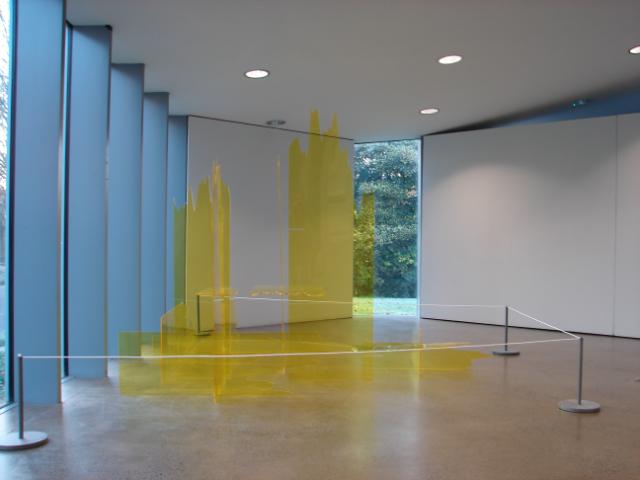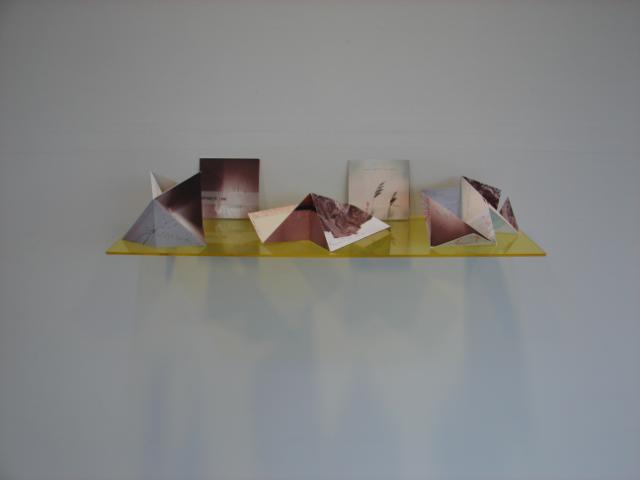
Niamh Schmidtke, LCGA Graduate Award, 2019
29 November 2019 - 26 January 2020
Limerick City Gallery of Art
Niamh Schmidtke, Plan No. 7, LCGA installation view
Niamh Schmidtke, LCGA Graduate Award, 2019
Niamh Schmidtke is the recipient of the LCGA Graduate Award 2019 and was invited to exhibit her work from her Degree Show in LCGA – Plane No 7 and The Homeless Line.
The root of Niamh Schmidtke’s practice is to expose and understand the gap between financial capitalism and our everyday ‘lived’ economies within a visual context. With these works, the artist shows that artistic interventions can open a space within which it becomes possible to have a meaningful dialogue about our economies.
Statistics exist on flat and immaterial planes and show the world from a cold and ‘non-local’ perspective. Working through drawing resulted in sections of statistical data being transformed into a series of planes. Over time, planes can be added or removed, allowing the object to change with our economy and never be completed.
Plane No.7 is made from bright yellow Perspex, which not only references that statistical line it was determined from, but also the slick, and commercial displays of capitalist economies.
Niamh is currently studying for her MFA in Goldsmiths College, London.
Artists Statement
The root of my practice is to expose and understand the gap between financial capitalism and our everyday ‘lived’ economies. There are many problems with this subject matter, three of these problems - the scale of our economies; statistics as a visualisation tool; and how such data can become graspable – informed the construction of the two works on display, Plane No.7 and The Homeless Line. With these works, I intend to show that artistic interventions can open a space within which it becomes possible to have a meaningful dialogue about our economies.
The first problem is that we live inside our economies; they are so large that they have become invisible to us. This system is so all-encompassing it is simply impossible to gain a full picture of our economy, yet unless we strive to just that it will remain invisible to us. Timothy Morton’s theory of Hyperobjects (2013) is valuable here; he describes an object that is massively distributed in time and space, relative to humans. The difficulty of ‘trying to evoke the objectness of hyperobjects’, as Morton puts it, is that they are ‘primordially in their being prior to thinking’. He proposes that one way to visualise these hyperobjects is by abstracting them through statistics.
However, statistics exist on flat and immaterial planes and show the world from a cold and ‘non-local’ perspective. This led me to examine Gilles Deleuze’s theories of planes and rhizomes, within his co-authored book with Félix Guattari, 1000 Plateaus (1987). Their thoughts on capitalism as a ‘crossroads of all kinds of formations.’ led me to a new understanding of the ways we investigate our economies. Using this image of the multiplicities of capitalism, I began critically investigating the structure of a rhizome, as something that ‘connects any point to any other point.’ I used drawing to deconstruct the language within 1000 Plateaus, as an instinctual translation and application of Deleuzian concepts into my visual language.
Working through drawing resulted in sections of statistical data being materialised into a series of planes. Over time planes can be added or removed, allowing the object to change with our economy and to never be complete. Plane No.7 is made from bright yellow Perspex, which not only references that statistical line is was determined from, but also the slick, and commercial displays of capitalist economies. The language of commodity production is used to make a statement about the invisibility of our economies
Whilst working through the problem of how to materialise this statistical data I was also grappling with the third problem: how the work might be graspable for a viewer. Returning to 1000 Plateaus, I re-explored how Deleuze and Guattari discussed capitalism as existing in multiplicities. This led to the simultaneous production of another work. Taking the view of the rhizome as something that is ‘… always detachable, connectable, reversible, modifiable and has multiple entryways’ I began using the book as an object with a particular set of codes; a beginning, middle and end, a set of pages, a cover etc… By using a recognisable format, the effect of rhizomatic thinking was more explicit. As a result, The Homeless Line, breaks ideas down into planes. Acting as a series of 3D folds, each plane of thought is allowed to exist and connect through the viewer’s interaction. The process of ‘reading’ the work plays with the process of making, physically manifesting how the sculptural object was conceived and formed. The dynamic dialogue between the objects allows the work to exist in multiples, as each work is reconfigurable with many access and exit points, both to the viewer and to one another. Through a process of deterritiorialising and reterritorialising each other, the works exist in a state of tension and becoming.'
For further information please contact: siobhan.oreilly@limerick.ie




